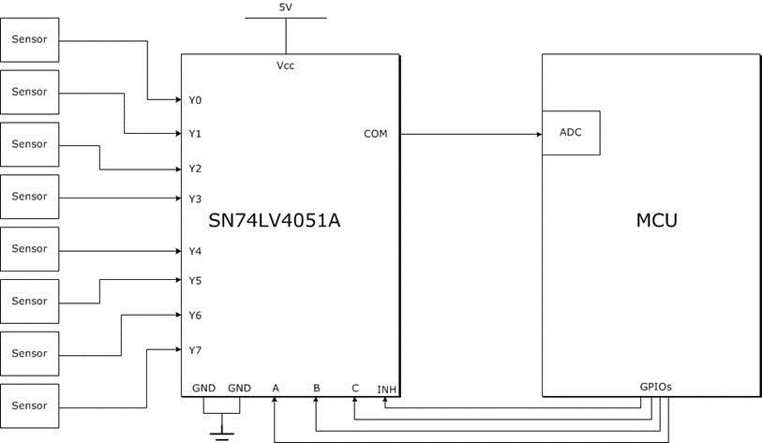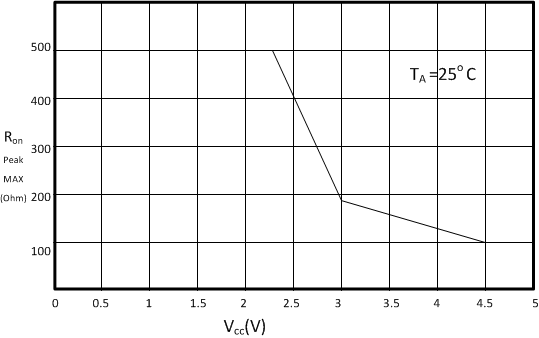SCLS428I May 1999 – September 2015 SN74LV4051A
UNLESS OTHERWISE NOTED, this document contains PRODUCTION DATA.
- 1 Features
- 2 Applications
- 3 Description
- 4 Revision History
- 5 Pin Configuration and Functions
-
6 Specifications
- 6.1 Absolute Maximum Ratings
- 6.2 ESD Ratings
- 6.3 Recommended Operating Conditions
- 6.4 Thermal Information
- 6.5 Electrical Characteristics
- 6.6 Operating Characteristics
- 6.7 Switching Characteristics: VCC = 2.5 V ± 0.2 V
- 6.8 Switching Characteristics: VCC = 3.3 V ± 0.3 V
- 6.9 Switching Characteristics: VCC = 5 V ± 0.5 V
- 6.10 Analog Switch Characteristics
- 6.11 Typical Characteristics
- 7 Parameter Measurement Information
- 8 Detailed Description
- 9 Application and Implementation
- 10Power Supply Recommendations
- 11Layout
- 12Device and Documentation Support
- 13Mechanical, Packaging, and Orderable Information
パッケージ・オプション
デバイスごとのパッケージ図は、PDF版データシートをご参照ください。
メカニカル・データ(パッケージ|ピン)
- PW|16
- DB|16
- NS|16
- N|16
- RGY|16
- D|16
- DGV|16
サーマルパッド・メカニカル・データ
- RGY|16
発注情報
9 Application and Implementation
NOTE
Information in the following applications sections is not part of the TI component specification, and TI does not warrant its accuracy or completeness. TI’s customers are responsible for determining suitability of components for their purposes. Customers should validate and test their design implementation to confirm system functionality.
9.1 Application Information
A multiplexer is used in applications where multiple signals share a resource. In Figure 11, several different sensors are connected to the analog-to-digital converter (ADC) of a microcontroller unit (MCU).
9.2 Typical Application
 Figure 11. Example of Multiplexer Use With Analog Sensors and the ADC of an MCU
Figure 11. Example of Multiplexer Use With Analog Sensors and the ADC of an MCU
9.2.1 Design Requirements
Designing with the SN74LV4051A device requires a stable input voltage between 2 V (see Recommended Operating Conditions for details) and 5.5 V. Another important design consideration are the characteristics of the signal being multiplexed—ensure no important information is lost due to timing or incompatibility with this device.
9.2.2 Detailed Design Procedure
Normally, processing eight different analog signals requires eight separate ADCs, but Figure 11 shows how to achieve this using only one ADC and four GPIOs (general-purpose input/outputs).
9.2.3 Application Curve
 Figure 12. Plot at 25°C for VCC vs Max RON(peak)
Figure 12. Plot at 25°C for VCC vs Max RON(peak)